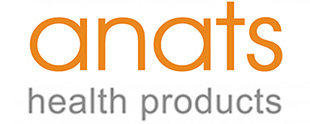Anats SA in Medica 2019 Friday, November 22, 2019 ANATS SA and its team was part of the biggest show “MEDICA 2019” (Dusseldorf – Germany) which was more dynamic, more digital, more innovative and more networked than ever. The Medical industry is definitely striding into the future with useful IoMT (Internet of Medical Things) in almost every field.
Low Blood Pressure (Hypotension) Symptoms and Treatments-Low blood pressure (hypotension) definition and facts Low blood pressure, also called hypotension, is blood pressure low enough that the flow of blood to the organs of the body is inadequate and symptoms and/or signs of low blood flow develop shock. Low pressure alone, without symptoms or signs, usually is not unhealthy. The symptoms of low blood pressure include lightheadedness, dizziness, and fainting. These symptoms are most prominent when individuals go from the lying or sitting position to the standing position (orthostatic hypotension). Low blood pressure that causes an inadequate flow of blood to the body's organs can cause strokes, heart attacks, and kidney failure. It's most severe form is shock. Common causes of low blood pressure include a reduced volume of blood, heart disease, and medications. The cause of low blood pressure can be determined with blood tests, radiologic studies, and cardiac testing to look for heart failure and arrhythmias. Treatment of low blood pressure is determined by the cause of the low pressure.
What is high blood pressure? What is normal blood pressure? High blood pressure (hypertension) is defined as high pressure (tension) in the arteries, which are the vessels that carry blood from the heart to the rest of the body. Blood pressure readings are given as two numbers: The systolic blood pressure (the top number) equals the pressure in the arteries as the heart contracts. The diastolic pressure (the bottom number) is the pressure in the arteries as the heart relaxes. Normal blood pressure is below 120/80. In 2017, the American College of Cardiology released new guidelines for high blood pressure. Blood pressure between 120/80 and 129/80 is elevated blood pressure, and a blood pressure of 130/80 or above is considered high. The American Academy of Cardiology defines blood pressure ranges as: Hypertension stage 1 is 130-139 or 80-89 mm Hg, and hypertension stage 2 is 140 or higher, or 90 mm Hg or higher. Complications of high blood pressure include heart disease, kidney (renal) disease, hardening of the arteries (atherosclerosis or arteriosclerosis), eye damage, and stroke (brain damage). Hypertension is a major public health problem. With the new guidelines for defining high blood presure, The American Heart Association estimates high blood pressure affects nearly half of all adults (46%) in the United States.
Diabetes type 1 and type 2 definition and facts Diabetes is a chronic condition associated with abnormally high levels of sugar (glucose) in the blood. Insulin produced by the pancreas lowers blood glucose. Absence or insufficient production of insulin, or an inability of the body to properly use insulin causes diabetes. The two types of diabetes are referred to as type 1 and type 2. Former names for these conditions were insulin-dependent and non-insulin-dependent diabetes, or juvenile onset and adult onset diabetes. Symptoms of type 1 and type 2 diabetes include increased urine output, excessive thirst, weight loss, hunger, fatigue, skin problems slow healing wounds, yeast infections, and tingling or numbness in the feet or toes. Some of the risk factors for getting diabetes include being overweight or obese, leading a sedentary lifestyle, a family history of diabetes, hypertension (high blood pressure), and low levels of the "good" cholesterol (HDL) and elevated levels of triglycerides in the blood. If you think you may have prediabetes or diabetes contact a health-care professional.
What is cholesterol? Cholesterol is a chemical compound that the body requires as a building block for cell membranes and for hormones like estrogen and testosterone. The liver produces about 80% of the body's cholesterol and the rest comes from dietary sources like meat, poultry, eggs, fish, and dairy products. Foods derived from plants contain no cholesterol. Cholesterol content in the bloodstream is regulated by the liver. After a meal, cholesterol in the diet is absorbed from the small intestine and metabolized and stored in the liver. As the body requires cholesterol, it may be secreted by the liver. When too much cholesterol is present in the body, it can build up in deposits called plaque along the inside walls of arteries, causing them to narrow.

